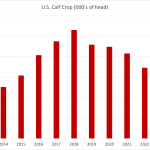Prairie farmers remain sharply divided over whether to keep the Canadian Wheat Board’s single desk authority over wheat and barley or move to an open market.
But they agree on one thing.
A strong majority wants the decision to be made by the CWB’s elected directors, not the federal government.
Farmers surveyed by a Toronto-based opinion research firm on behalf of the CWB were asked who should determine the board’s future.
Seventy–seven percent said the decision should be made by the farmer-elected directors, 17 percent said the federal government and six percent provided no response.
Read Also

Pulse fractionation business expected to soon get a boost
Louis Dreyfus Company will soon be producing pea protein isolate at its new plant under construction in Yorkton
CWB chair Larry Hill said the results are in line with the board’s views.
“This is what we’ve been saying throughout this debate,” he said from his farm near Swift Current, Sask.
“Farmers want to have control of the wheat board and I think it’s clear they see the elected directors as their direct representatives.”
The governing Conservatives have a bill before Parliament that would enable the government to add or remove grains from the CWB with a regulatory order.
The telephone survey of 1,300 permit book holders in the three prairie provinces was conducted March 7 to 17 by the Gandalf Group, a Toronto-based public opinion research company. The results are considered to be accurate within 2.28 percentage points 19 times out of 20.
The wide-ranging survey asked farmers for their views on the profitability of farming, who best represents farmers’ views, support for the CWB, control of the CWB and the single desk-open market debate.
Complete results of the survey can be found at www.cwb.ca.
On the contentious issue of barley marketing, the survey produced some predictable, some surprising, and some seemingly contradictory responses.
For example, a majority favoured an open market over a single desk, but a larger majority approved the CashPlus barley marketing program.
Asked if CashPlus meets barley producer needs, 73 percent of barley growers said yes and 21 percent no.
There was a big difference when it came to feed and malting barley.
For feed barley, 41 percent wanted an open market, 38 percent a dual market and 17 percent the single desk.
For malting barley, 39 percent favoured a dual market, 32 percent the single desk and 24 percent the open market.
“That indicates to me that a lot of the push on barley is coming from the feed side,” said David Herle of the Gandalf Group.
Given three marketing choices for barley generally, 41 percent chose a dual market, 27 percent the single desk and 26 percent the open market.
The government said those numbers indicate 67 percent (open market plus dual market) support its plans to end the board’s monopoly on barley.
“Almost 70 percent favour some choice in marketing,” said Conservative MP David Anderson. “The board needs to look at these results and take action itself.”
But Herle said that’s misleading, noting one could as easily add the dual market and single desk numbers and say 68 percent favour the CWB.
That reflects the uncertainty about what dual market supporters want.
“Those farmers seem to want both the freedom of the open market and the security of a strong CWB, and they stubbornly cling to that,” he said.
When asked to choose between two options, 52 percent favoured the open market and 40 percent the single desk.
From 2002 to 2007, opinion on those two options was evenly divided at around 47 percent.
Herle said there are two likely reasons for the reduction in single desk support in the past two years.
First, the survey shows 58 percent of farmers believe that the brief open market last year caused barley prices to rise.
Second, two years ago the government imposed a gag order prohibiting the board from promoting the benefits of the single desk to farmers, while the government embarked on an aggressive campaign promoting the open market.
“Over time, that has an impact on support levels, it has to,” he said. “If you have two competing sets of ideas and one disappears from the marketplace, it will suffer in terms of support, there is no question.”














